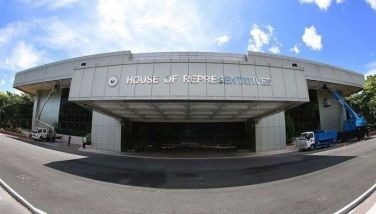Hybrid program boosts RP rice industry — study
January 29, 2006 | 12:00am
The government’s Hybrid Rice Commercialization Program (HRCP) is now a big boost to the country’s cereal industry.
Thus, asserted a research team that assessed the HRCP’s mid-term performance.
The researchers were Flordelisa Bordey, Leonardo Gonzales, Leocadio Sebastian, Cheryll Casiwan, Jesus Beltran, Alice Mataia, Rowena Manalili, and Guadalupe Redondo, all of the DA-Philippine Rice Research Institute (PhilRice).
Their study, titled "Socioeconomic Impact of the Philippine Hybrid Rice Commercialization Program", won the top prize (socioeconomics category) at the 17th National Research Symposium organized by DA-BAR during the 2005 National Agriculture and Fisheries R&D Week.
It covered five hybrid rice-producing provinces (Isabela, Nueva Ecija, Iloilo, Davao del Norte, and Davao del Sur) during the wet season (WS) of 2002 and 2003 and dry season (DS) of 2003 and 2004.
The researchers noted that at the start of the HRCP (WS 2002), hybrid seed growers in the five provinces were less profitable by 66 percent than the inbred seed producers.
" A major reason for this comparative low profitability was due to the low yield of 355 kilograms per hectare," they said.
In the succeeding seasons, however, when yields in hybrid seed production considerably increased, the net profitability of hybrid seed production has overtaken that of inbred seed growers by a range of 20 to 86 percent even without the seed subsidy.
Following are among the program’s significant accomplishments:
• The area planted to hybrid rice increased from 5,472 ha in 2001 to 208,342 ha in 2004, which is seven percent of the total irrigated rice area.
• Hybrid rice production increased from 29,223 metric tons of paddy in 2001 to 1,091,258 mt in 2004.
• The HRCP generated 85,266 jobs and benefited 247,887 hybrid rice farmers and 1,857 seed growers during the four-season period.
• In terms of savings from rice imports, the program had an economic savings equivalent to $23.25 million.
The DA-PhilRice researchers pointed out that the study’s findings affirmed HRCP’s great potential in improving the rice subsector’s productivity.
"If these empirical findings were typical of the other hybrid rice-producing provinces, these results should provide a very clear mandate of the leadership of the Department of Agriculture to vigorously sustain the budgetary support of the program and fully institutionalize it as a major program within the department," they concluded.
Thus, asserted a research team that assessed the HRCP’s mid-term performance.
The researchers were Flordelisa Bordey, Leonardo Gonzales, Leocadio Sebastian, Cheryll Casiwan, Jesus Beltran, Alice Mataia, Rowena Manalili, and Guadalupe Redondo, all of the DA-Philippine Rice Research Institute (PhilRice).
Their study, titled "Socioeconomic Impact of the Philippine Hybrid Rice Commercialization Program", won the top prize (socioeconomics category) at the 17th National Research Symposium organized by DA-BAR during the 2005 National Agriculture and Fisheries R&D Week.
It covered five hybrid rice-producing provinces (Isabela, Nueva Ecija, Iloilo, Davao del Norte, and Davao del Sur) during the wet season (WS) of 2002 and 2003 and dry season (DS) of 2003 and 2004.
The researchers noted that at the start of the HRCP (WS 2002), hybrid seed growers in the five provinces were less profitable by 66 percent than the inbred seed producers.
" A major reason for this comparative low profitability was due to the low yield of 355 kilograms per hectare," they said.
In the succeeding seasons, however, when yields in hybrid seed production considerably increased, the net profitability of hybrid seed production has overtaken that of inbred seed growers by a range of 20 to 86 percent even without the seed subsidy.
Following are among the program’s significant accomplishments:
• The area planted to hybrid rice increased from 5,472 ha in 2001 to 208,342 ha in 2004, which is seven percent of the total irrigated rice area.
• Hybrid rice production increased from 29,223 metric tons of paddy in 2001 to 1,091,258 mt in 2004.
• The HRCP generated 85,266 jobs and benefited 247,887 hybrid rice farmers and 1,857 seed growers during the four-season period.
• In terms of savings from rice imports, the program had an economic savings equivalent to $23.25 million.
The DA-PhilRice researchers pointed out that the study’s findings affirmed HRCP’s great potential in improving the rice subsector’s productivity.
"If these empirical findings were typical of the other hybrid rice-producing provinces, these results should provide a very clear mandate of the leadership of the Department of Agriculture to vigorously sustain the budgetary support of the program and fully institutionalize it as a major program within the department," they concluded.
BrandSpace Articles
<
>
- Latest
Latest
Latest
May 14, 2024 - 3:43pm
By Ian Laqui | May 14, 2024 - 3:43pm
April 10, 2024 - 5:12pm
By Ian Laqui | April 10, 2024 - 5:12pm
March 4, 2024 - 3:32pm
By Ian Laqui | March 4, 2024 - 3:32pm
March 4, 2024 - 2:12pm
By Kristine Daguno-Bersamina | March 4, 2024 - 2:12pm
February 17, 2024 - 2:31pm
February 17, 2024 - 2:31pm
Recommended




























